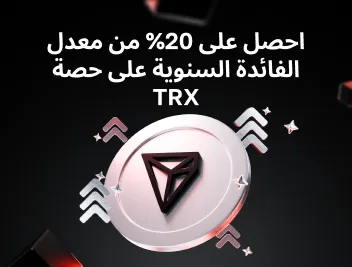
هل مونيرو استثمار جيد في نوفمبر ٢٠٢٥؟
الفضاء الرقمي للعملات المشفرة يصعب التنقل فيه، خاصةً عندما يتعلق الأمر باختيار العملة المناسبة للاستثمار. اليوم سنلقي نظرة على إمكانيات الاستثمار في مونيرو لمساعدتك على تحديد ما إذا كانت تتناسب مع أهدافك المالية واهتماماتك ومدى تحملك للمخاطر.
مونيرو كاستثمار
مونيرو (XMR) هي عملة مشفرة تتميز في مجال البلوك تشين بتركيزها على الخصوصية واللامركزية. على عكس بيتكوين وإيثيريوم، اللتين تستخدمان البلوك تشين العامة التي يمكن تتبع المعاملات وتحليلها من خلالها، يستخدم مونيرو تقنيات تشفير متقدمة مثل التوقيعات الدائرية، والعناوين المخفية، و"البولت برووف" لضمان أن المعاملات غير قابلة للتتبع ومجهولة وسرية. هذا يجعل مونيرو جذابة بشكل خاص لأولئك الذين ي prioritizing الخصوصية، سواء لأسباب مشروعة أو بسبب الرغبة في تجنب المراقبة. ومع ذلك، أدى هذا التركيز على الخصوصية إلى بعض التدقيق التنظيمي في بعض البلدان، حيث تشعر السلطات بالقلق بشأن استخدامها المحتمل في الأنشطة غير القانونية. على الرغم من ذلك، حصل مونيرو على قاعدة جماهيرية وفية بين الأفراد المهتمين بالخصوصية، وداعمي الحرية المالية، ومستخدمي التمويل اللامركزي (DeFi).
من منظور استثماري، تمثل مونيرو فرصة رائعة، ولكنها تأتي مع بعض المخاطر والاعتبارات. سوق العملات المشفرة بشكل عام متقلب، وعملات الخصوصية مثل مونيرو ليست استثناء. قد يجذب المستثمرون إمكانياتها كتحوط ضد الأنظمة المالية التقليدية ودورها كبديل يركز على الخصوصية في عالم يزداد فيه التركيز على المراقبة. ومع ذلك، قد تعيق ميزات الخصوصية الخاصة بها، على الرغم من أنها تجذب البعض، التبني الواسع لها، خصوصًا بين المنظمين الذين قد يفرضون قيودًا أو حظرًا استجابةً للقلق بشأن غسل الأموال أو التهرب الضريبي. علاوة على ذلك، فإن خوارزمية التعدين الخاصة بمونيرو، RandomX، مصممة لتكون مقاومة لأجهزة التعدين المتخصصة (ASIC)، مما يعني أنه يمكن تعدينها باستخدام أجهزة الكمبيوتر العادية، مما قد يساهم في شبكة أكثر لامركزية ولكن قد يؤدي أيضًا إلى تحديات في قابلية التوسع.
لمحة تاريخية عن سعر مونيرو
مرّت مونيرو (XMR) بتاريخ سعري متقلب منذ انطلاقتها في 2014. فيما يلي لمحة سنوية عن تحركات سعرها، مع تسليط الضوء على المحطات الرئيسية والأحداث المهمة:
-
2014: تم إطلاق مونيرو رسميًا في أبريل 2014، بعد انقسامها عن بيتكوين. في الأيام الأولى، كان سعرها منخفضًا نسبيًا، أقل من 1 دولار.
-
2015: تراوح السعر بين 0.50 دولار و 0.7 دولار طوال معظم العام. استمرت تقنية مونيرو في التطور، مع تحديثات وتحسينات منتظمة لميزاتها في الخصوصية. ومع ذلك، كانت هيمنتُها في السوق محدودة.
-
2016: تراوح السعر من حوالي 0.50 دولار إلى 15 دولارًا بنهاية العام. بدأت مونيرو في اكتساب المزيد من الاعتراف في مجتمع العملات المشفرة. ساعد إدخال "البولت برووف" في أواخر 2017 في تعزيز سمعتها كعملة الخصوصية الرائدة، رغم أن سعرها لم يشهد بعد أي اختراق ملحوظ.
-
2017: شهدت مونيرو ارتفاعًا دراماتيكيًا في السعر، حيث بدأت بحوالي 13 دولارًا ووصلت إلى أعلى مستوى لها في ذلك الوقت بحوالي 390 دولارًا في ديسمبر 2017. ساعدت فترة الارتفاع الكبير في سوق العملات المشفرة في 2017 على تعزيز سعر مونيرو. كما أدى الوعي المتزايد واعتماد ميزات الخصوصية إلى زيادة الطلب على مونيرو.
-
2018: بعد بلوغها ذروتها في ديسمبر 2017 ويناير 2018، انخفض سعر مونيرو بشكل كبير، حيث تراوح بين 150 و300 دولار طوال معظم العام. أثرت التصحيحات العامة في السوق التي بدأت في أوائل 2018 على جميع العملات المشفرة، بما في ذلك مونيرو، مما أدى إلى انخفاض سعرها إلى 45 دولارًا.
-
2019: تقلب سعر مونيرو بين 40 و115 دولارًا طوال العام. أدى القلق بشأن استخدام عملات الخصوصية في الأنشطة غير القانونية إلى قيام بعض البورصات بإزالة مونيرو من قائمة التداول في بعض البلدان، مما أثر على سيولتها واعتمادها.
-
2020: استقر سعر مونيرو بين 50 و150 دولارًا طوال معظم العام، مع زيادة قصيرة فوق 100 دولار في النصف الثاني من 2020. واجهت مونيرو تحديات مستمرة حيث قامت بورصات مثل بينانس وغيرها بإزالة أو تقييد توافرها بسبب القلق التنظيمي.
-
2021: ارتفع سعر مونيرو بشكل حاد، بدءًا من حوالي 130 دولارًا في يناير ليصل إلى أكثر من 450 دولارًا بحلول مايو 2021، قبل أن يعود إلى النطاق بين 150 و250 دولارًا في نهاية العام.
-
2022: تقلب سعر مونيرو بين 100 و250 دولارًا، مع تقلبات ملحوظة في أعقاب الظروف الاقتصادية العالمية والرقابة التنظيمية. استمر سوق عملات الخصوصية في مواجهة تحديات، ولكن مونيرو حافظت على موقعها كأعلى عملة مشفرة تركز على الخصوصية.
-
2023: كان سعر مونيرو مستقرًا نسبيًا، حيث تراوح بين 120 و200 دولار طوال معظم العام. استمر استخدام مونيرو في المعاملات التي تركز على الخصوصية، وكان لها دعم في بعض الأسواق المتخصصة. كما ركزت مجتمعها التطويري على تحسين قابلية التوسع وميزات الخصوصية.
-
2024 (حتى منتصف نوفمبر): يتراوح سعر مونيرو بين 150 و170 دولارًا. يهدف التطوير النشط لمونيرو، بما في ذلك دمج ميزات الخصوصية الجديدة مثل Bulletproofs+ القادمة، إلى ضمان قدرتها التنافسية في فضاء العملات المشفرة المتطور.
-
2025: يتداول **متبدأ مونيرو شهر نوفمبر قرب 359 دولارًا مع إظهار استقرارٍ يفوق معظم سوق الكريبتو. وبينما يظل القطاع ككل متقلّبًا، حافظت مونيرو على موقعها بعد صعودٍ متأخر في أكتوبر وتتحرّك الآن ضمن نطاقٍ صحيّ وثابت. إن تصاعد الاهتمام بالخصوصية واستمرار قوة الشراء ساعداها على التماسك، ما يجعل XMR تبدو قوية تقنيًا ومهمّة مجددًا مع عودة الاهتمام بـ«عملات الخصوصية».
هل أشتري XMR الآن؟
على الأرجح لا ينبغي شراء مونيرو الآن إذا كنت تبحث عن نقطة دخولقد يكون شراء مونيرو خيارًا جيدًا الآن، مع ضرورة إدارة المخاطر بعناية. فالسعر يتحرّك فوق جميع المتوسطات المتحركة الرئيسية — من متوسّط 20 يومًا وحتى 200 يوم — ما يُظهر اتجاهًا صاعدًا متينًا. مؤشّرا الزخم وMACD يشيران كلاهما إلى استمرار القوة، بما يرجّح استمرارية الاتجاه بدلًا من انعكاسه. كما أن معظم المذبذبات ما تزال حيادية، أي أن مونيرو ليست في منطقة تشبّع شرائي ولديها مجال إضافي للصعود. وطالما واصل السعر العثور على دعمٍ قرب متوسطاته الصاعدة وبقيت أحجام التداول مستقرة، فالمشهد يميل إلى ارتفاعٍ تدريجي. ومع ذلك، تبقى نقاط الدخول على التراجعات قرب مناطق الدعم الديناميكي أكثر أمانًا من مطاردة قممٍ جديدة تحسّبًا لاحتمال فتور الزخم القصير الأجل.
اطّلع هنا على توقّعٍ أكثر تفصيلًا لأداء مونيرو.

هل مونيرو استثمار جيد على المدى الطويل؟
قد تعتبر مونيرو (XMR) استثمارًا جيدًا على المدى الطويل، ولكن كما هو الحال مع أي عملة مشفرة، يعتمد ذلك على عدة عوامل، بما في ذلك تحملك للمخاطر، وأهدافك الاستثمارية، ورؤيتك لمستقبل العملات المشفرة التي تركز على الخصوصية.
-
الطلب على الخصوصية والتبني: مع تزايد المخاوف بشأن المراقبة وخصوصية البيانات والأنظمة المالية المركزية، هناك طلب متزايد على العملات المشفرة التي تركز على الخصوصية. تضع ميزات الخصوصية القوية لمونيرو العملة في موقع جيد لتلبية احتياجات الأفراد الذين يقدرون الخصوصية المالية والسرية. علاوة على ذلك، وجدت مونيرو استخدامًا في بعض الأسواق المتخصصة، مثل المجتمعات التي تركز على الخصوصية، وأسواق الدارك نت، ومنصات التمويل اللامركزي (DeFi). إذا نمت هذه القطاعات، فقد يرتفع الطلب على مونيرو.
-
المخاطر التنظيمية: واحدة من أكبر المخاطر التي تواجه مونيرو كاستثمار طويل الأجل هي البيئة التنظيمية. في بعض البلدان، تم إزالة مونيرو من بعض البورصات أو خضعت لرقابة شديدة. ومع ذلك، قد تساعد مجتمع مونيرو القوي واهتمامه بالخصوصية في التكيف مع هذه القضايا. يعتمد النجاح طويل الأجل على كيفية تكيّف العملة مع التغيرات في البيئة التنظيمية. إذا تمكنت مونيرو من الاستمرار في العمل ضمن حدود اللوائح القانونية وكسب قبول في البلدان التي تقدر الخصوصية، فقد تتحسن آفاقها على المدى الطويل.
-
تقلبات السوق والمخاطر: مثل معظم العملات المشفرة، فإن مونيرو شديدة التقلب. إذا كنت تفكر في مونيرو كاستثمار طويل الأجل، يجب أن تكون مستعدًا لاحتمالية التقلبات الكبيرة، بما في ذلك إمكانية فترات طويلة من الركود أو الانخفاضات. سيؤثر الاتجاه العام في سوق العملات المشفرة أيضًا على مستقبل مونيرو. إذا اكتسبت العملات المشفرة بشكل عام تبنيًا وقبولًا أوسع، فقد تشهد عملات الخصوصية مثل مونيرو زيادة في الطلب.
-
التطورات التكنولوجية: تم بناء مونيرو باستخدام تقنيات تشفير متقدمة وتخضع بشكل دوري لتحديثات لتعزيز ميزات الخصوصية وقابلية التوسع والأمان. ولكن بالرغم من أن مونيرو هي أكثر عملة مشفرة تركز على الخصوصية شهرة، فإنها تواجه منافسة من عملات مشفرة أخرى تركز على الخصوصية مثل زي كاش (Zcash)، داش (Dash)، والتقنيات الأحدث التي تركز على تعزيز الخصوصية. قد يؤثر نجاح هذه المنافسات على حصة مونيرو في السوق وإمكانات نموها على المدى الطويل.
-
القابلية للبقاء على المدى الطويل لعملات الخصوصية: قد يدفع الوعي المتزايد بقضايا الخصوصية في العالم الرقمي سوق العملات المشفرة الأوسع نحو مستقبل تصبح فيه عملات الخصوصية أكثر أهمية. إن التزام مونيرو بالبقاء في طليعة تقنيات الخصوصية هو ميزة، لكنها ستحتاج إلى التكيف المستمر مع الابتكارات الجديدة في مجال الخصوصية والتحديات التنظيمية. سيكون نجاح عملات الخصوصية على المدى الطويل معتمدًا على التبني العام للأنظمة المالية التي تركز على الخصوصية.
متى يجب أن تبيع XMR الخاصة بك؟
قرار متى تبيع مونيرو (XMR) يعتمد على عدة عوامل، بما في ذلك أهدافك الاستثمارية، وظروف السوق، ومدى تحملك للمخاطر. إليك بعض الاعتبارات الرئيسية التي تساعد في توجيه قرارك:
-
تحقيق أهداف الاستثمار: إذا كنت قد حددت هدفًا محددًا للربح من XMR، فقد حان الوقت للبيع بمجرد أن تصل إلى هذا الهدف. يمكن أن يكون هذا بناءً على نسبة ربح أو مستوى سعر يتماشى مع أهدافك المالية.
-
ظروف السوق: إذا وصل سعر XMR إلى ذروته أو كان يشهد زيادة مفرطة، فقد يكون الوقت مناسبًا للبيع قبل حدوث تصحيح محتمل أو تراجع في السوق. راقب اتجاهات السوق العامة للعملات المشفرة، حيث قد تكون عملات الخصوصية أكثر تقلبًا.
-
القلق التنظيمي: إذا كنت تتوقع تشديد اللوائح أو احتمال حظر عملات الخصوصية في الأسواق الرئيسية، فإن بيع XMR بشكل استباقي قد يكون وسيلة لتقليل المخاطر. قد تؤدي الضغوط التنظيمية إلى انخفاضات حادة في السعر أو السيولة.
-
التطورات التكنولوجية: تابع التحديثات في ميزات الخصوصية لمونيرو أو أي ترقيات تكنولوجية أخرى. يمكن للتحديثات الإيجابية أن تدفع الأسعار للزيادة، بينما قد تشير الانتكاسات أو مشاكل الأمان إلى الحاجة للبيع.
-
إدارة المخاطر: إذا أصبحت XMR جزءًا كبيرًا جدًا من محفظتك، فكر في بيع جزء من ممتلكاتك لتنويع محفظتك وتقليل المخاطر. يمكن أن يساعد التنويع عبر أصول مختلفة في إدارة المخاطر المحتملة للتراجع.
في النهاية، معرفة متى تبيع XMR الخاصة بك يتطلب توازنًا بين تحليل السوق، استراتيجيتك الشخصية للاستثمار، والاستعداد للتكيف مع الظروف المتغيرة.
هل وجدت جميع الإجابات التي كنت تبحث عنها؟ هل ساعدنا في مساعدتك على تحديد ما إذا كانت مونيرو تتناسب مع خططك الاستثمارية؟ دعنا نعرف في التعليقات أدناه.
قيم المقال








تعليقات
0
يجب أن تكون مسجلا للدخول لتكتب تعليق